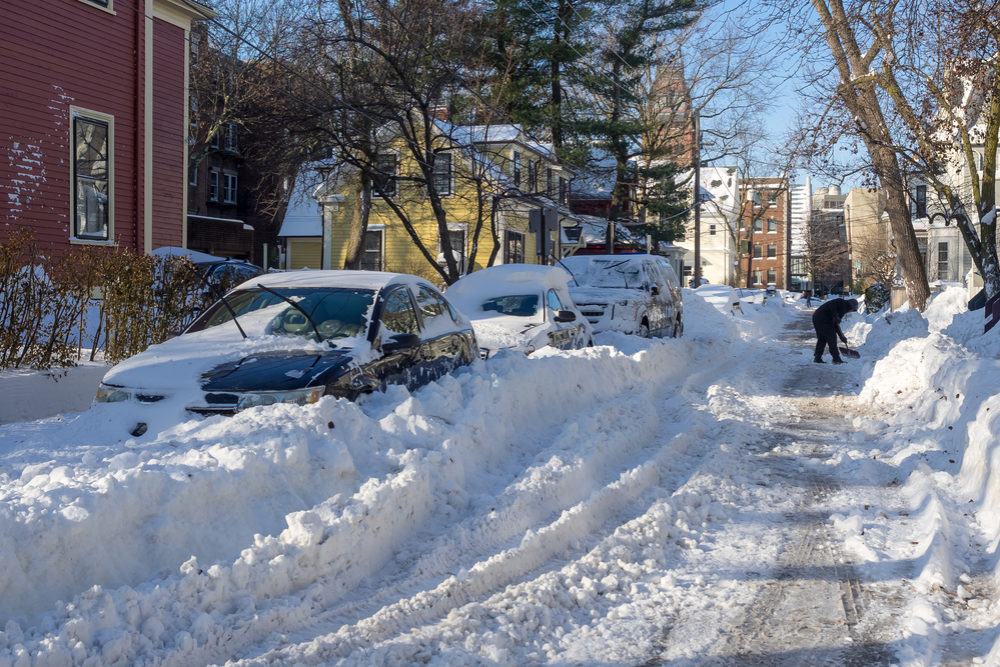CPSC Issues Carbon Monoxide Poisoning Safety Tips As Winter Storm Slams Midwest and Southern U.S.
More than 85% of carbon monoxide deaths over the last decade were caused by portable generators, according to the new CPSC report.

With much of the U.S. dealing with a massive winter storm, federal safety officials are warning Americans to be careful when using generators and portable heaters, due to the risks of carbon monoxide poisoning, which claims lives every year as individuals use gas-powered devices during power outages.
A sprawling winter storm system in the South and Midwest U.S. has pulverized homes and spawned dozens of tornadoes, creating blizzard conditions. In addition, with freezing temperatures throughout the East and Northeast, individuals in the path of the storm are expected to face heavy snow and ice, and many may lose power, turning to portable heaters and generators to stay warm.
The U.S. Consumer Product Safety Commission (CPSC) issued a reminder about carbon monoxide poisoning risks on December 13, pointing to the findings of a new report (PDF) that highlighted fatal incidents linked to non-fire-related carbon monoxide exposure.
Carbon Monoxide Poisoning Risks
According to the CPSC report, at least 900 people died between 2011 and 2021 from 710 incidents involving carbon monoxide exposure. More than 85% were caused by generators only. Another 9% were caused by other engine-driven tools, such as lawnmowers, garden tractors, portable pumps, power washers, snow blowers, and concrete saws. Five percent were from multiple fuel-burning consumer products.

Learn More About
Exposure to Carbon Monoxide Gas May Cause Permanent Brain Damage, Serious Injury or Death.
Learn More About this Lawsuit SEE IF YOU QUALIFY FOR COMPENSATIONIn 2021, there were 52 carbon monoxide-related deaths from 39 incidents. All of the incidents involved portable generators used to substitute electricity or heating.
In 17% of the incidents, there was no carbon monoxide alarm present. In 18 of the incidents the alarm was not operating and in 13 the alarm sounded but it was misunderstood or disarmed.
Carbon monoxide is often called the invisible killer, because it is odorless, colorless, and undetectable without a device. It can kill in minutes. If a storm knocks out power, portable generators pose one of the greatest risk of carbon monoxide poisoning.
Symptoms of carbon monoxide poisoning include nausea, dizziness, or weakness. An average of 85 people die in the US each year from carbon monoxide poisoning from portable generators.
Tips on Avoiding Carbon Monoxide Poisoning
The CPSC provided these safety tips for carbon monoxide and smoke alarms:
- Install battery-operated carbon monoxide alarms or alarms with battery backup on each level and outside sleeping areas at home. Use interconnected alarms so that when one sounds, they all sound.
- Install smoke alarms on every level and inside each bedroom at home.
- Test carbon monoxide and smoke alarms monthly to make sure they are working properly and replace batteries if needed.
- Never ignore an alarm when it sounds. Get outside immediately.
- Clear snow away from the outside vents of fuel-burning appliances like furnaces, so dangerous carbon monoxide does not build up in the house.
Portable Heater Tips:
- Keep all sides of the portable heater 3 feet from beds, clothes, curtains, papers, sofas, and other items that can catch fire.
- Always use a wall outlet, never a power strip.
- Make sure the heater is on a stable level surface where it will not be knocked over.
- Never leave the heater running unattended in a confined space.
- If the cord is hot, disconnect the heater and contact an authorized repair person.
Generator Tips:
- Never operate a portable generator inside a home, garage, basement, crawlspace, or shed. Opening doors or windows will not ventilate the area of built-up lethal levels of carbon monoxide.
- Only operate generators outside, 20 feet away from the house. Point the exhaust away from the home and keep windows closed that are in the path of the generator’s exhaust.
Do not operate a generator on a porch or in a carport. - Make sure the generator has been maintained properly.
- Look for generators that have a shut-off safety feature, which will automatically shut off when levels of carbon monoxide are high. Models may be advertised as certified to the latest safety standards for portable generators–PGMA G300-2018 and UL 2201–which are estimated to reduce deaths from CO poisoning by 87% and 100%.
Get more articles like this sent directly to your inbox.
"*" indicates required fields





0 Comments